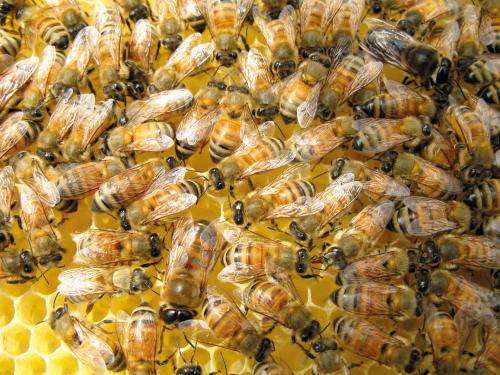Scientists flying to the rescue of bees

A world without bees? Don't even consider it! Of course we would miss the products of the hive, such as honey, pollen and beeswax. But most of all, these super-pollinators are essential to agriculture. In terms of tonnage, then 35% of what we eat is directly dependent on their silent efforts. As for diversity, then 84% of cultivated species in Europe, and more than 80% of wild species, make use of their legs and fur to exchange pollen and reproduce themselves. So would you be prepared to do without the majority of fruits and vegetables?
Nevertheless, we know that bees are going through some difficult times. Pesticides, pathogens and invasive predators are threatening their survival. This list should also include intensive agriculture, which standardises landscapes and deprives bees of constantly accessible and varied sources of food. The winter mortality of bees in the hive is also a worrying factor: levels reach between 20% and 30% in France, around 40% in Belgium and Sweden. It is enough to make beekeepers desperate, and many have thrown in the towel. This situation is particularly worrying because farming suffers from a severe lack of pollinators. Indeed, crops throughout Europe currently require an additional 13.4 million bee colonies to meet their needs.
What can be done? Research scientists are making major efforts to better understand the causes for the decline of bee populations, and notably to determine synergies between environmental factors, plant health products and diseases. These efforts are being rewarded not only in scientific terms but also at a political level; it is indeed the results of their work, notably carried out in INRA research units, which led to the European moratorium on neonicotinoid insecticides.
In order to determine the reasons for this decline, a clearer understanding of the honey bee is essential: its physiology, diet, extraordinary forms of communication, the social structure of its colonies, beekeeping practices, and above all the relationships between bees and the different environments and ecosystems in which they may live.
Let's not waste any more time; you can now find out what INRA scientists are using to make their own liquid gold.
More information: The complete report is available online: www.alphagalileo.org/AssetView … 87661&CultureCode=en
Provided by INRA


















